HTC One max Review - It's Huge
by Brian Klug on October 28, 2013 10:00 AM EST- Posted in
- Smartphones
- HTC
- Mobile
- One
- Snapdragon 600
- Android 4.3
- One max
The One max joins a small but growing list of phones that include a fingerprint scanner for unlocking the device. I’ll leave the discussion about whether fingerprints are fundamentally usernames or passwords for another day, but fingerprint scanners seem to be in vogue right now for mobile phones. You could make the case that the perceived increase in security that comes with fingerprint scanners is both an enterprise or consumer play, again I’ll leave that philosophical discussion for another day. I remember the Motorola Atrix and its fingerprint scanner being a big deal a while ago, since then we’ve had the iPhone 5s dramatically reintroduce the fingerprint scanner and now the One max follow suit.
The One max fingerprint sensor is a swipe type, meaning there’s some kind of strip sensor inside that you swipe your finger across. Sliding your finger over this strip allows the module to scan a 2D region and extract features that are then used to identify a fingerprint. The One max hides this scanner inside a black square that’s slightly recessed on the back of the device, just beneath the camera. I’m reminded somewhat of the LG G2 and its rear-mounted power and volume buttons which also sit just beneath the rear-facing camera. Perhaps that’s a missed opportunity for LG, which could have also gone with a swipe type sensor in its power button. On the One max anyhow there’s no button, just the sensor. Although the fingerprint sensor is recessed slightly, it’s somewhat difficult to locate with just one’s index finger, something that results in inadvertent smudging of the rear-facing camera cover glass, something that didn’t happen as much with the G2 because there’s a larger lip and easily locatable bump.
The placement of the fingerprint sensor makes sense given that of the power button. As stated earlier for right handed users this means your index finger sits naturally near the sensor if your thumb is on the power button. Since the fingerprint button still requires activation to unlock the One max, you still need to press power to turn it on before you can swipe your finger and finally unlock it. I find myself wishing the fingerprint sensor was itself a button, something like the iPhone 5s, so unlocking could be as simple as pressing and swiping with the same finger. On the iPhone 5s the best activation pattern is pressing the home button and leaving the finger in contact with the button.
Setup requires you to set a passcode, after which a few training swipes trains the sensor for the finger you’ve chosen. Although the animation that plays shows the finger aligned along the long axis of the phone, for greater accuracy I trained the One max with my finger at the angle it would naturally be given my thumb on the power button. The only requirement given the swipe sensor is that the slide motion is straight down and not skewed.
The One max fingerprint sensor allows for up to 3 fingers to be paired, each able to either unlock or have the option of both unlocking and launching an application. I like the idea of fingerprints as shortcuts, something the iPhone 5s implementation lacks, but three fingers seems like a curiously low number given the ten digits humans have to work with. On the other hand, the placement of the button really limits you to middle and index fingers being viable options. In terms of functionality, although Apple doesn’t yet use fingerprints as shortcuts, Apple does use the fingerprint scanner to authenticate iTunes, iBooks, and App Store purchases, something HTC can’t quite do with the One max for Google Play purchases, at least until Google makes an API for it.
I initially trained the fingerprint sensor with my index finger being swiped straight down, and had some issues with unlocks requiring multiple swipes. Doing finger enrollment and training at an angle closer to how I actually swipe it naturally (at an angle) made the accuracy better, but the reality is that unlocking the One max still requires multiple tries more often than not. There isn’t much processing latency after a scan, but I had hoped the One max sensor would be tap and hold rather than swipe given its shape. I’m not clear what suppliers are involved for the sensor, but I’m told the One max also securely stores just the extracted features and not the fingerprint images (which is a no brainer). I haven’t delved much into the infrastructure used to secure the fingerprint features yet either. I’m also not sure whether the One max learns additional parts of the finger which wasn’t part of initial training the same way Apple’s does.
Although I don’t think anyone has totally nailed the fingerprint sensor yet on a device, the One max implementation definitely is further from perfection than Apple’s. Although it does work reasonably well, it still isn’t the transparent kind of convenience that I feel will compel users who ordinarily wouldn’t have to used a passcode to go and use the fingerprint scanner. I’ve continued using the fingerprint scanner on the One max, however.


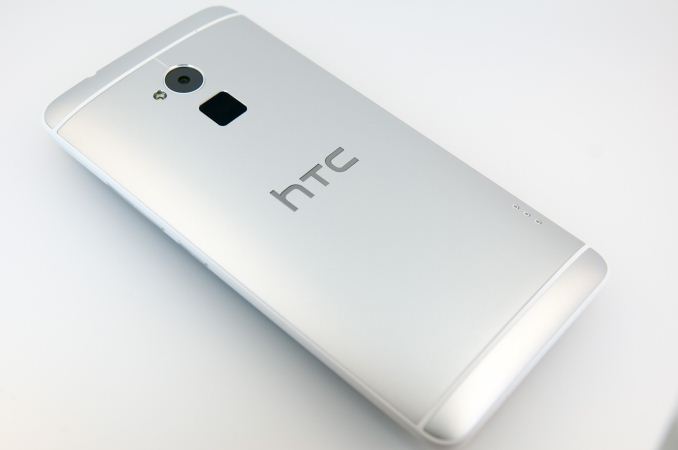
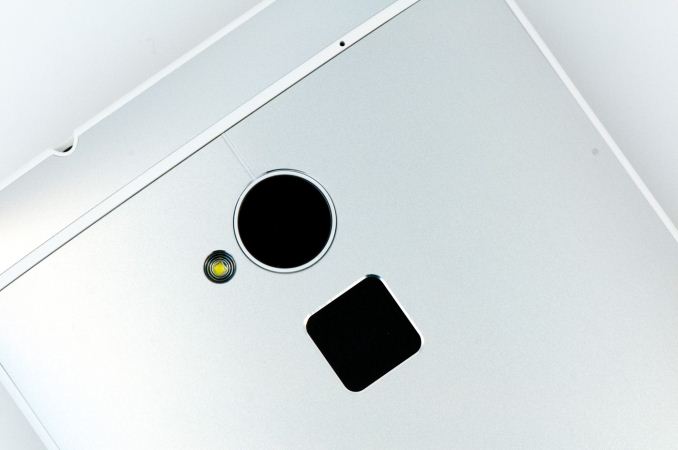
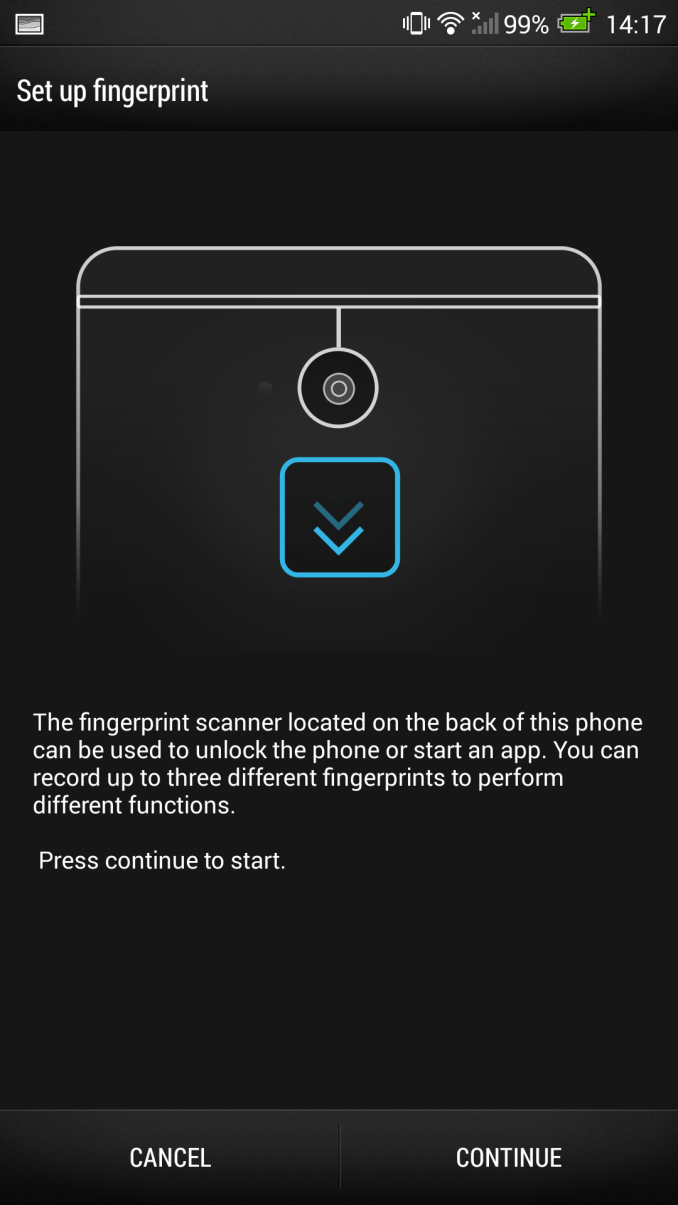
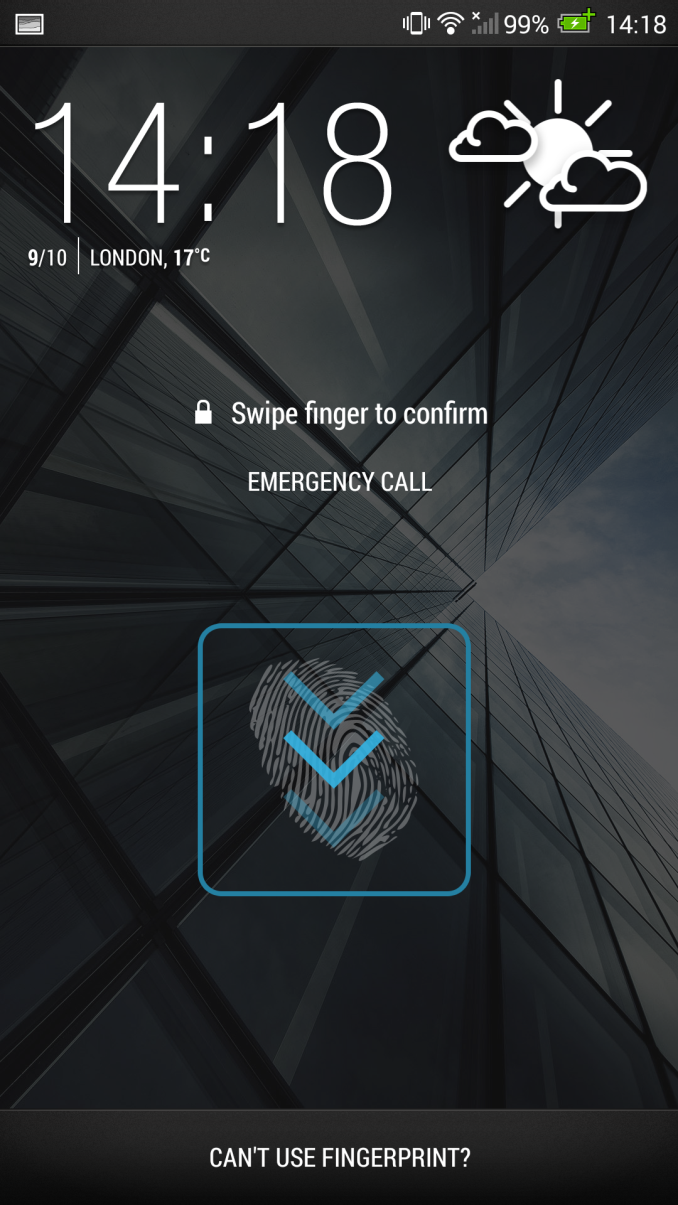

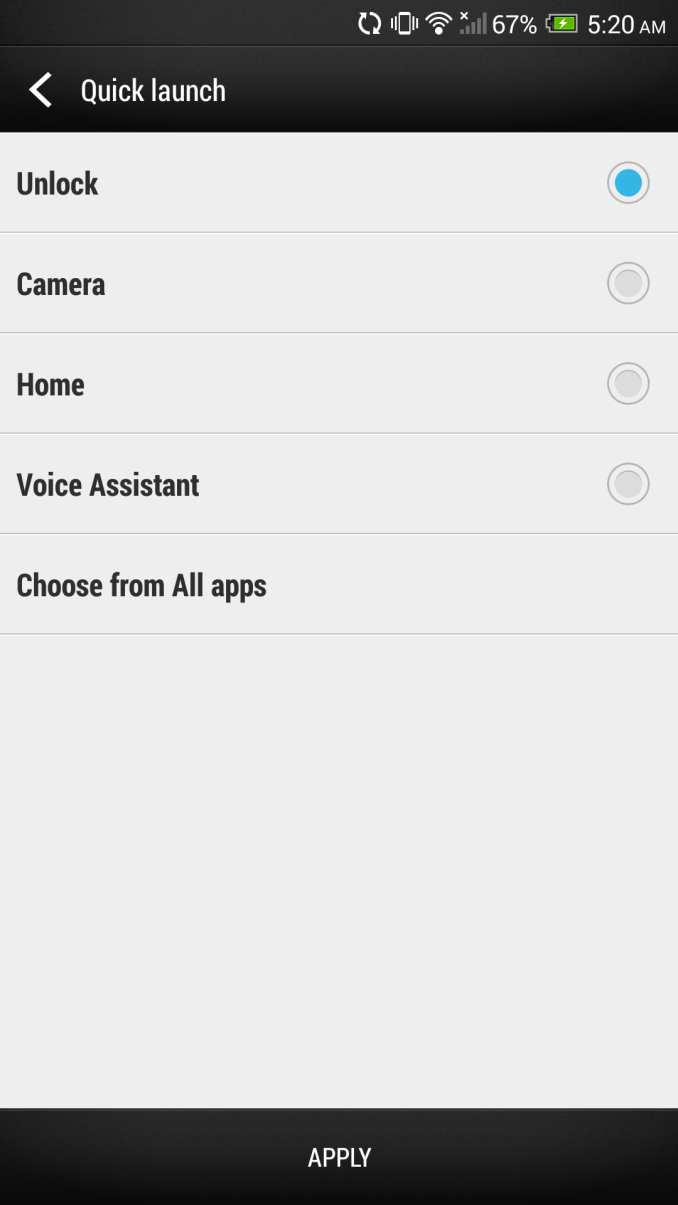








197 Comments
View All Comments
dawp - Tuesday, October 29, 2013 - link
please allow us to flag these spammers on the front page like we can in the forumsmregan - Tuesday, October 29, 2013 - link
Brian,Did you notice the problem that Zoes included in a highlight video now only show 1 second of motion and then freeze? I've seen that one my One when I upgraded to 4.3 and others have reported the same issue. It really seems like a bug. The highlights become much more static. All the other highlight changes are great but this is a step backward.
Thanks,
Mike
frakkel - Tuesday, October 29, 2013 - link
I for one really appreciate that Brian has an opinion and sticks to it. He sets the quality bar high and let his opinion shine through when quality is not met.Speaking of quality I am happy to see that the different brands go more and more up in quality of the device and not only specifications. Of course some users prefer an easy setup and others prefer fully customized solution. Here I am sure that the latter group is far the smallest but this group still gets fully addressed by some of the biggest players in the market. This is impressive I think.
For me personally I am sticking to my work phone, which is an old blackberry and I can live with this situation. But if I am going to put my money toward a smartphone I for one also would go for build quality. Today I am not sure which one but it would probably be a Nokia (I have owned Nokia phones before and were happy with the build quality), HTC (I for one also like the metallic casing) or and Apple (The small form factor is for me a positive thing).
So to rap up. Brian stick with you preferences some likes some hate. But his is expected when an opinion is given.
Disclaimer: I am not a native speaking so my grammar and language errors should be overlooked.
Dentons - Wednesday, October 30, 2013 - link
I can respect an opposing opinion as much as the next guy, but when it's delivered in Brian's smug, "I know what's best for everyone" attitude, it's a bit much to digest.MercuryStar - Thursday, October 31, 2013 - link
I didn't interpret it as being smug. For that matter, I didn't interpret it as an opinion, either. Take his claim that microSD slots are going the way of the dodo. I think you can objectively look at how many devices include microSD card slots and conclude that it's no longer the norm in Android devices outside of Samsung and Sony, and also objectively look at how Android is engineered and conclude that they don't seem to be accommodating microSD slots in their OS design anymore.I don't think you should interpret this observation as an indication that Brian hates microSD card slots or something, he's just making an observation. In the case of this handset he felt that the removable back for the microSD reader compromised the design and I agree - it's heavier, bulkier and means it's no longer a gapless unibody design. But if the device had included a microSD slot on the side or something, so as not to compromise the design, I don't think this would have been a problem.
GiantPandaMan - Tuesday, October 29, 2013 - link
Please stop using the word literally incorrectly.It should only be used when you could take the something either figuratively or literally.
IE-
"He blew up."
"He got popular?"
"No, literally he blew up. The dynamite he was carrying exploded."
Saying a phone is literally a larger version of another phone is unnecessary. The phone is a larger version of another phone.
Arbie - Tuesday, October 29, 2013 - link
"For the incredibly small percentage of users that clamors for an SD card..."How about the incredibly small percentage of users who obsess (for pages) over the color and finish on the phones? Oh wait - that's you guys at Anandtech.
I just bought a smartphone with an mSD slot BECAUSE it had an mSD slot. Money where mouth is; vendors, listen up.
onslaught86 - Tuesday, October 29, 2013 - link
I have a real soft spot for HTC. My first smartphone was the Apache, and for all its ridiculousness, I loved it. Followed by the Titan, a brief flirtation with Samsung's WinMo lineup for the Omnia, then the mighty HD2 - which is still my favourite smartphone experience due to the mad levels of developer support & fully functional Android + Windows Phone 7 ports. I've now been with Samsung for the life of the Galaxy S line, jumping on the Note bandwagon after the S III, and although I (genuinely) enjoy the functionality of Touchwiz, I'm getting sick of a few things that just haven't been fixed through three or four revisions of their software suite.I kept wanting HTC to make something that would tempt me away - had they shipped the international Evo 3D closer to the Galaxy S II's release, I'd have picked that up instead. Yet, for the past two years, there's been too many compromises - both the One X & the One disappointed in the battery life department above all others, something I'm not keen to compromise on. Especially so after the Note II set a hefty precedent.
Then there's the SD card argument. Given the instability & low quality of the memory, combined with the poor and confusing experience SD cards can give consumers, I don't mind that they're going out of vogue. Wouldn't store anything crucial on something so volatile. Although in principle I wholeheartedly support user-accessible upgrades, SD slots are no excuse for insufficient internal storage, as everyone with a '16GB' Galaxy S4 discovered. For my use-case, however (Swapping between devices regularly, keeping a lot of lossless music offline, and storing backup images), an SD card slot is a definite point towards a device.
Now, for the first time in 2+ years, HTC have made a device that ticks the most important boxes - screen size, battery capacity & run-time, expandable storage. I can deal with the size, I'm a Note fan (Also have the 5.9" Pantech Vega N°6, which is a mammoth device). Although flip cases are not my bag, a portable kickstand with 20% extra battery sounds fantastic. The metal build, the stereo speakers, the SLCD when I'm getting awfully sick of poorly calibrated AMOLED panels, it all stacks up. They're even taking proper advantage of the screen size with a 5x5 home screen grid, Samsung's persistence with 4x4 on the Note II & 3 is baffling to me. The lack of OIS is a downer, I do love and use the S Pen regularly, the lack of S800 is almost deal-breaking, and yet...
HTC have finally made a device that appeals to the core of my smartphone experience, and I feel compelled to give them money in the hopes they keep doing this.
Arbie - Wednesday, October 30, 2013 - link
Don't belabor it tiresomely.Arbie - Wednesday, October 30, 2013 - link
@DavidjanThanks for the tip on the Meenova OTG-SD card adapter! I just went and bought one, even though I don't yet have an Android device. I will someday, and this is too good to pass up. Plus, such a tiny company could disappear. BTW I lobbied Sandisk, Transcend etc a year ago for something like this but those that replied said it couldn't be done...
As for Brian Klug's comment that microSD is "going the way of the dodo": He probably thinks that means an evolutionary death. In fact the dodo was killed off by idiots with no concern for the future. There's nothing "natural" about losing microSD - it packs huge amounts of affordable storage in a tiny, rugged, hot-swap package. It should rightfully be with us for many years. Unfortunately, it's being marketed out existence by tablet makers pushing internal RAM, telecom carriers pushing data usage, and probably even Hollywood.